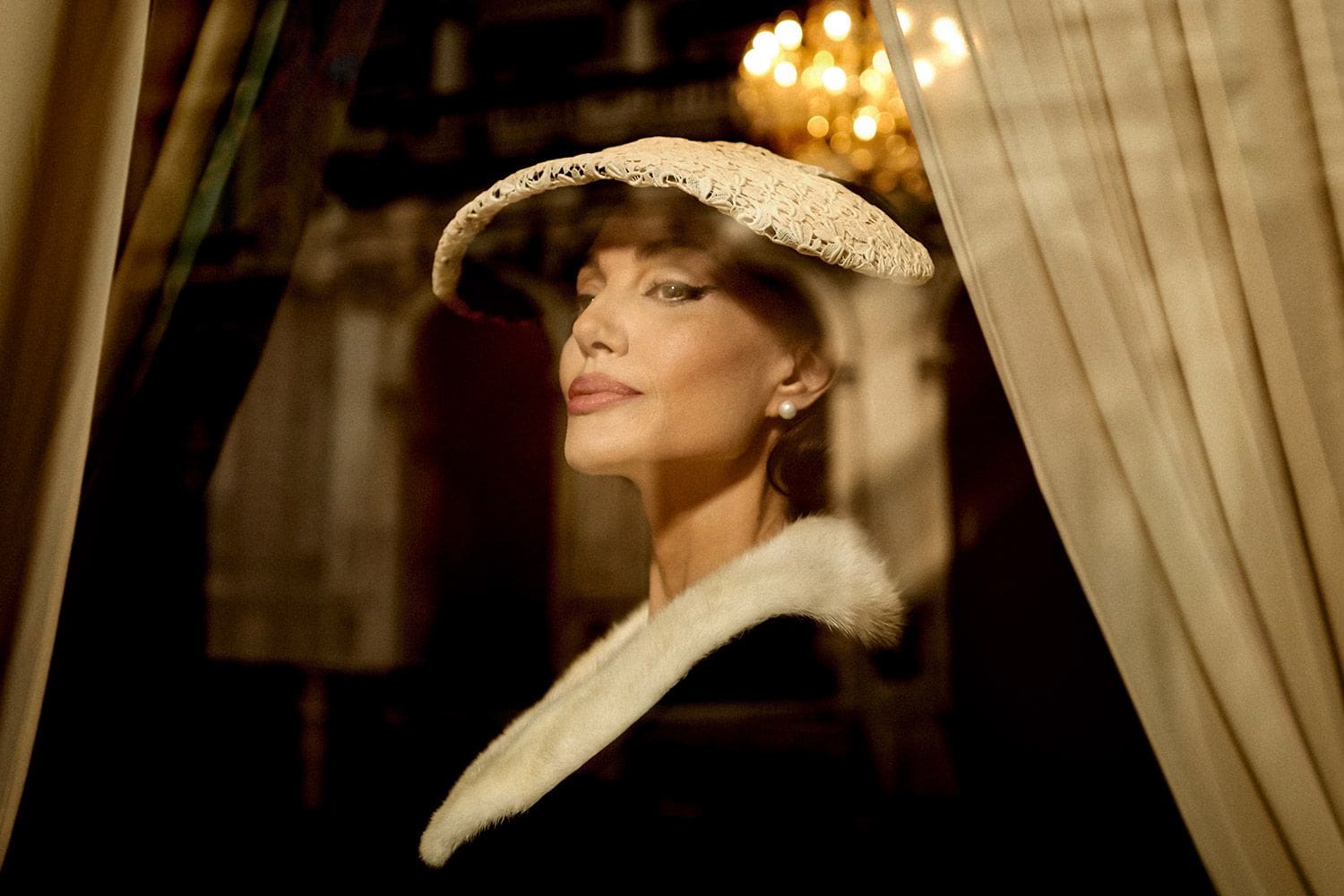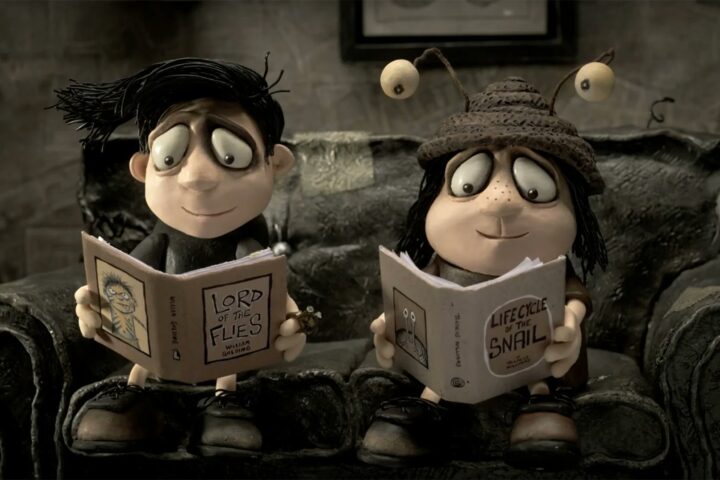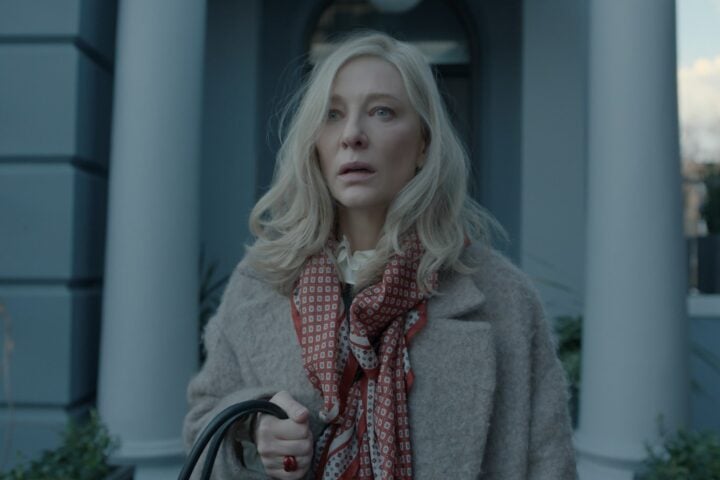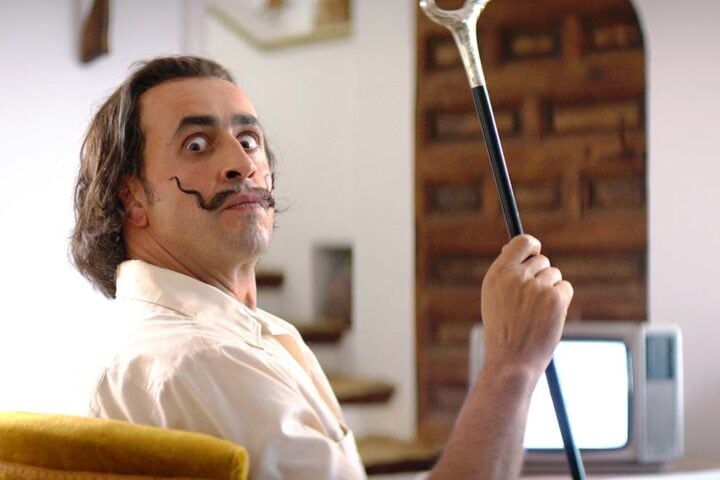Between Jackie, Spencer, and, now, Maria, Pablo Larraín has thrice committed the cardinal sin of taking a female icon of the 20th century and, in an attempt to hold a mirror up to her multitudes, flattened her into the equivalent of a kitschy postage stamp. Though his sense of style seems like an attempt to absolve him of indulging in the generic tendencies of the biopic, his dependence on repeating the same ideas with the same self-seriousness does a disservice to his supposed goal of bestowing a sense of agency on complex, hyper-surveilled icons of femininity. Too often, as in Maria, he conflates a woman moping around empty rooms to brash music with a more tactile notion of interiority or complexity.
So it’s a shame that Angelina Jolie—portraying Callas in the final week of her life, living somewhat isolated in an opulent Paris apartment—is relegated to playing by the Larraín rulebook. Maria confronts the reality and unreality of her life, the nature of public and private performance (she literally says at one point that she doesn’t have to perform in Paris because the people around her are already giving a performance), and whether female (in)sanity is a rubric dictated by men. The opera singer lumbers from room to room or slumps against a record player, surrounded by LPs. She deals with the ghosts of her past lives, re-litigates her life and loves with an imaginary journalist friend (Kodi Smit-McPhee) conjured by the medication she takes, and looks sad both when she’s alone and when she’s an object of spectatorship off stage.
Jolie obviously prepared for this role, and impressively so, especially in scenes where we get a sense of the varying rate of Callas’s vibrato, the veins in her hands and neck bursting with the flow of blood and music. Otherwise, though, the performance feels strangely detached and mannered. The film contains intermittent moments of humor, but Jolie’s Callas doesn’t exude the spontaneity that the soprano did in interviews from this time period.
And while it’s clear that Larraín has intentionally cast his trilogy with stars that have their own mythology in the public eye, it’s curious that the scenes where that meta-textual spark could be the driving fuel feel empty. When Callas describes her performance of the “Mad Scene” as Anna Bolena in Athens in 1957, she reminisces about the fury she felt toward the audience, the journalists who had lied about her, and Aristotle Onassis (Haluk Bilginer), her on-again-off-again “whatever” (as she calls him). But in the actual reenactment that follows, Jolie appears devoid of the very fury that her Callas describes moments before. And returning to the role of an addict, one would hope that a new point of view about that kind of character’s experiences and gestures would emerge, but it’s obscured by a lot of faint smirking or sullen skulking.
Like most movies about older women in the entertainment industry, Maria explores Callas’s attempt to reconnect and re-embody her younger self. The film bounces around time as well as in between performances that Callas gave in the past, giving Jolie the opportunity to pantomime singing grand arias. In toggling back and forth between the present and past Marias and their changing vocal qualities—Jolie’s singing voice was mixed with Callas’s own for the present-day scenes—so does the film transition between color and black-and-white images. But besides the part where Callas says that “there is a theater behind my eyes,” the combination of various aesthetic approaches fails to fit within the broader surrealistic devices of the film more legibly.
Much of Maria tries to conjure the epic-ness of opera, with grand performance halls and shots of Jolie in close-up. In such moments, Jolie’s aura feels positively gargantuan. Yet Larraín and screenwriter Steven Knight, who also wrote Spencer, consistently talk down to their audience, treating us as if we’re incapable of grasping anything more complicated than “iconic women contain multitudes,” all the while boiling down those multitudes into easily digestible observations, like having Callas say, “What is real and not real is my business.”
When he chose La Callas as a subject, Larraín had the advantage of being able to let the singer’s music speak for itself. If the film is worth seeing, it’s for the sake of the pleasure of hearing her voice reach cosmic heights, and stewing in its stormy ferociousness and ravenous passion. It’s just a shame that the person who wants to give her a voice in death makes it crack.
Since 2001, we've brought you uncompromising, candid takes on the world of film, music, television, video games, theater, and more. Independently owned and operated publications like Slant have been hit hard in recent years, but we’re committed to keeping our content free and accessible—meaning no paywalls or fees.
If you like what we do, please consider subscribing to our Patreon or making a donation.







I thought this criticism was on the money for Jackie, which really was just music playing as natalie portman looked sad in different rooms. Spencer was a lot more camp and funny, so hoping this one leans more that way.